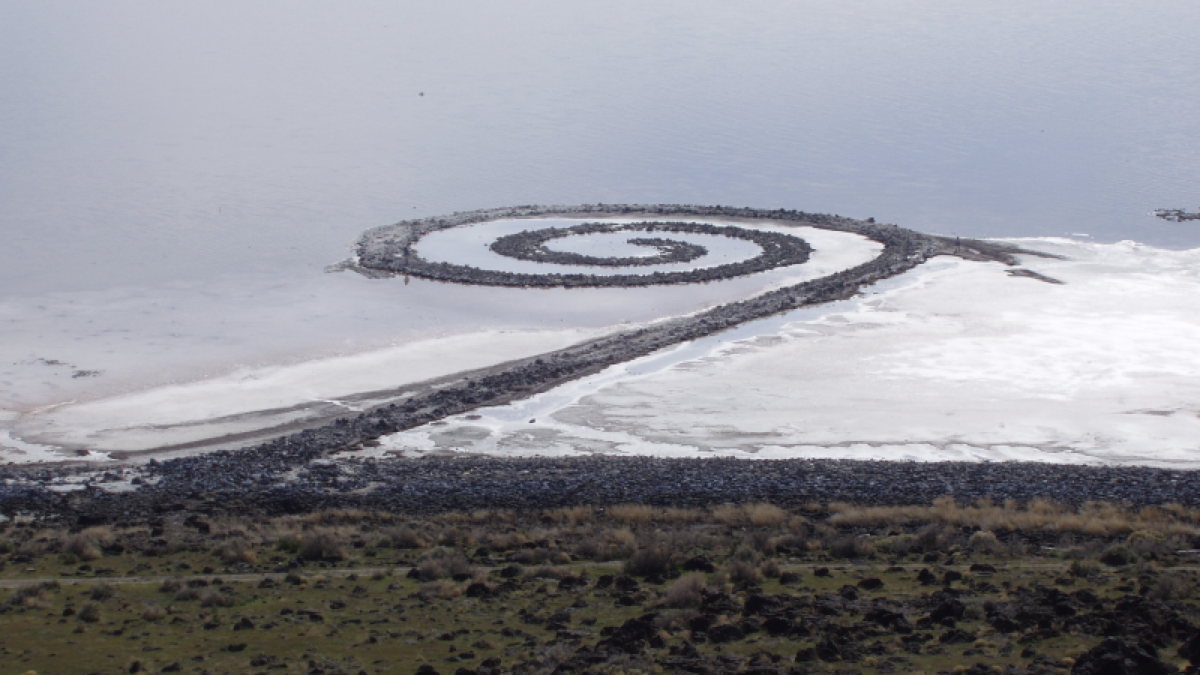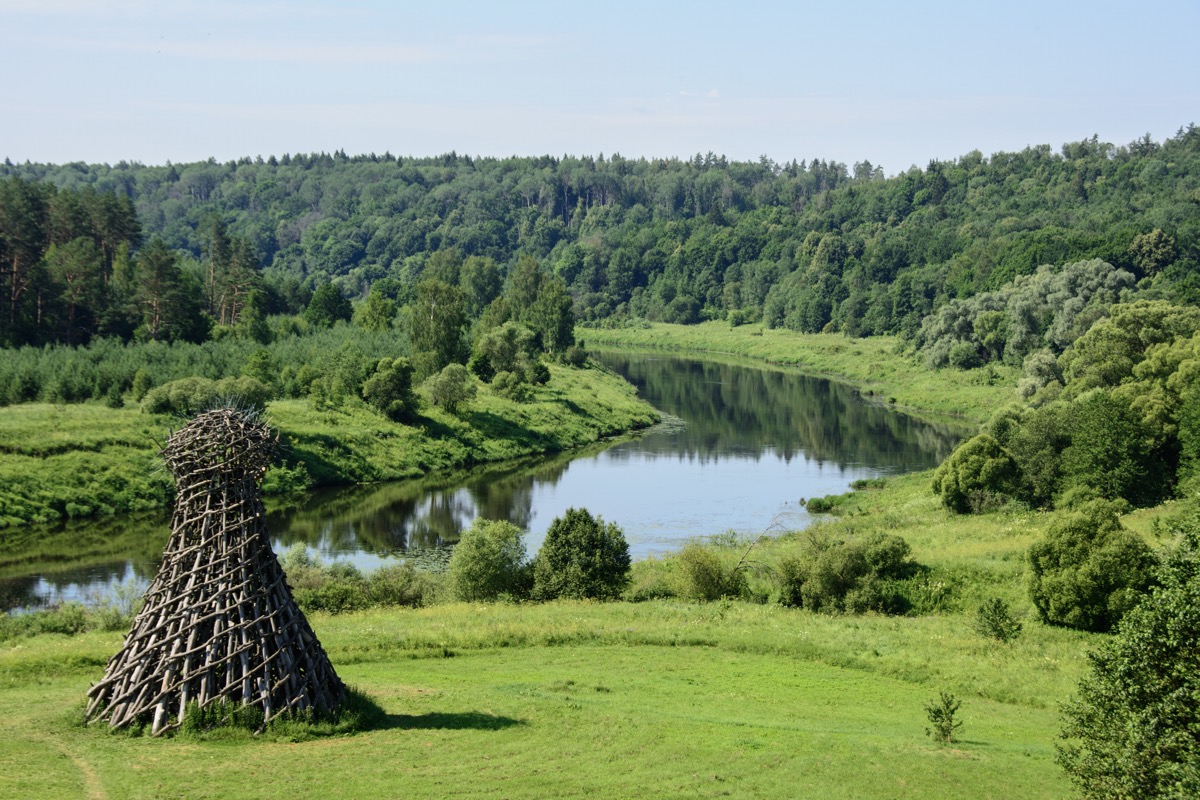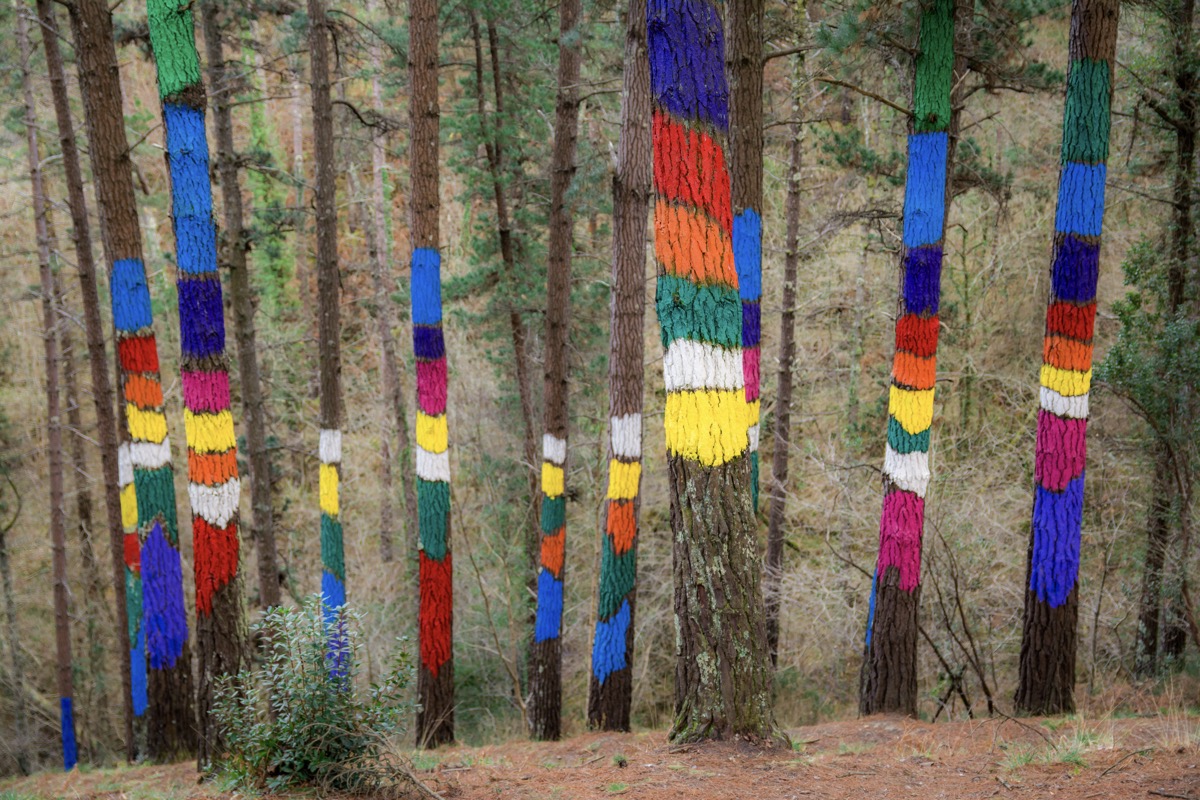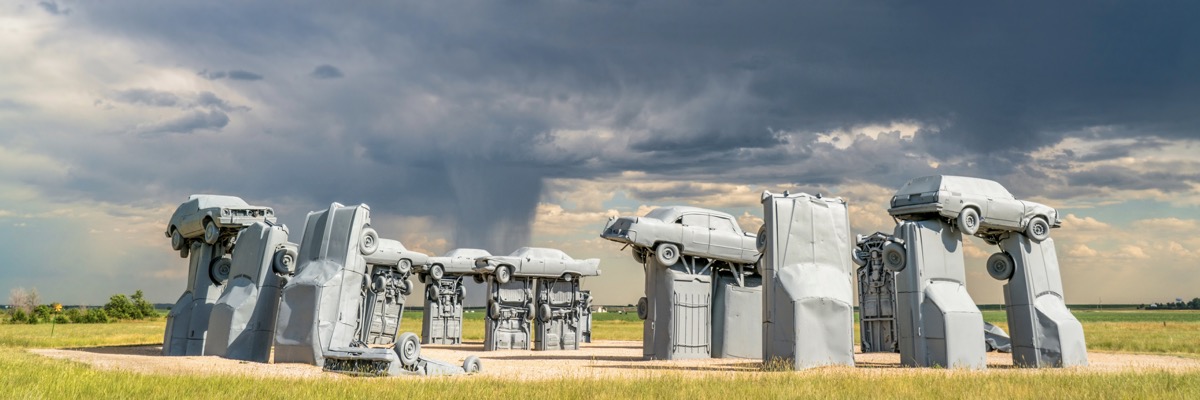We use cookies and other proprietary and third-party technologies to make our website work correctly and securely. We also use them to analyse user browsing and be able to adapt advertising to your tastes and preferences. Cookies Policy.
The land is the canvas and the materials offered by nature (wood, earth, stones, sand, wind, rocks, fire, water, ice, snow…) are the tools for artistic creation. That is what defines Land Art, also called Earthwork, a branch of contemporary art that’s somewhere between sculpture and architecture. A trip by car can reveal one of these fleeting works of art on the side of a mountain or in an isolated area, if observed from a high mountain pass.
Born in the United States at the end of the 1960s, this artistic manifestation coincided with a certain awareness of ecology that was beginning to take hold. Its artists act on the landscape –be it urban or rural, a mountain or a desert– to evoke plastic responses in the viewer. It’s their way of calling attention to human interaction with the environment while at the same time establishing a dialogue with the landscape and a reflection about our passage through the Earth. The promoters of this movement sought to connect art and life: to take art out of the museums and the commercial circuits of the galleries. This explains the artist’s lack of interest in his creation once it was finished: a way of “dematerializing” it and making it something much more, devoid of speculative interests.

The outdoors is the immense gallery for this kind of artistic representations, which tend to be ephemeral because they can be eroded by nature. Thus, each work has two authors: the creator who imagines and carries it out, and nature. For these artists, the important thing is not the result but the process. This is why they tend to carefully document each step of their creation and the finished work.
The most famous work of Land Art is Spiral Jetty, by the American Robert Smithson. Located in the desert of Utah (USA), he used some 5,000 tons of black basalt blocks that he moved with powerful machines. The work starts on the bank of Great Salt Lake and moves into the water in a counter-clockwise spiral. The water covers it, and only a drought provided a new view. Just as its creator had predicted, the spiral was greatly changed from having been underwater for so long: the salt had bleached the original black color, and silt had accumulated between the cracks.

Besides Smithson, other leading artists have used the earth’s infinite canvas to portray their creativity, including Walter de Maria, Richard Long, James Turrell, Michael Heizer and Nancy Holt. Many of their creations have disappeared from the natural spaces they occupied, their existence only confirmed by photographs.
The works of Land Art tend to be abstract or of geometric designs, because in using natural elements that they rarely modify, the artists can adapt their compositions to these organic shapes. Sometimes it’s enough for an artist to walk on the ground to create a work, as in the case of the British artist Richard Long, whose work A Line Made by Walking disappeared shortly after its inception. Other works are drawn on a beach, as Andrés Amador does, or in the desert. On other occasions, they are painted on rocks in intense colors, as the French artist Jean Verame did in a park near the Berber town of Trafaoute, in Morocco, or are drawn on tree trunks, like Bosque de Oma, by Agustín Ibarrola, in the Basque Country. Other times, enormous sculptures are created, adapted to the landscape in which they are placed. Examples of this are Staircase to Heaven, Golden Spiral and City of Orion, by the German artist Hannsjörg Voth, in the Sahara desert in Morocco; Carhenge by Jim Reinders, in Nebraska (USA) and Peine del Viento, by Spaniard Eduardo Chillida.

In spite of Land Art’s wish to be outside of museums, some of these works have made it into galleries and art centers. In Spain, they can be seen at the CDAN, Centro de Arte y Naturaleza at the Beulas Foundation, in Huesca; the Fundación NMAC, in Montenmedio (Cadiz) and the CACis, Centro de Arte Contemporáneo y Sostenibilidad El Forn de la Calç, in the town of Calders (Barcelona province).

Notice: Trying to access array offset on value of type null in /DATA/sites/ontheroadtrends.com.preproduccion.com/webspace/wp-content/themes/ontheroad2023/templates/newsletter.php on line 3
Notice: Trying to access array offset on value of type null in /DATA/sites/ontheroadtrends.com.preproduccion.com/webspace/wp-content/themes/ontheroad2023/templates/newsletter.php on line 4
Notice: Trying to access array offset on value of type null in /DATA/sites/ontheroadtrends.com.preproduccion.com/webspace/wp-content/themes/ontheroad2023/templates/newsletter.php on line 5